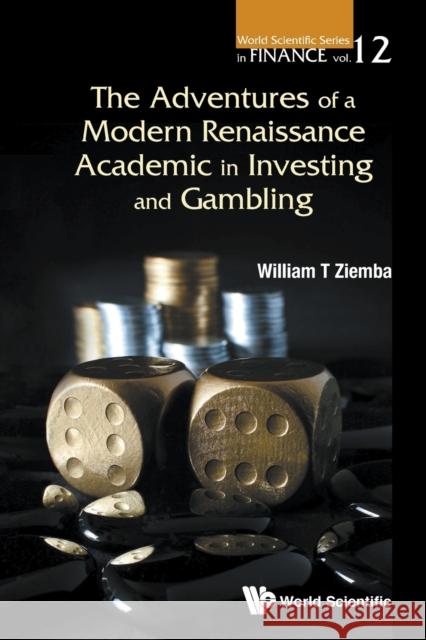The Adventures of a Modern Renaissance Academic in Investing and Gambling » książka
The Adventures of a Modern Renaissance Academic in Investing and Gambling
ISBN-13: 9789813148291 / Angielski / Miękka / 2017 / 484 str.
The Adventures of a Modern Renaissance Academic in Investing and Gambling
ISBN-13: 9789813148291 / Angielski / Miękka / 2017 / 484 str.
(netto: 157,30 VAT: 5%)
Najniższa cena z 30 dni: 164,15
ok. 30 dni roboczych
Dostawa w 2026 r.
Darmowa dostawa!
This book tells the story of how financial markets have evolved over time and became increasingly more complex. The author, a successful and experienced trader, who among other things won the 2015 battle of the quants futures contest held in New York, shares how one can navigate today's dangerous financial markets and be successful. Readers at all levels will benefit from his analysis and many real life examples and experiences. The coverage is broad and there is considerable discussion on ways to stay out of trouble, protect oneself and grow one's assets. The author was the first one to do turn of the year January effect trades in the futures markets starting in the beginning of S&P 500 futures trading in 1982. That has been successful and the author explains his ideas and experiences from the beginning in simple markets to the current, very complex markets we have in 2016.The author discusses the various ways that traders and investors lose money in the financial markets. Many examples are provided, including Long Term Capital Management, ENRON, Amarath, Neiderhoffers funds and many major companies such as Lehman Brothers, Society Generale, Saloman Brothers. This is invaluable to understanding ways to avoid such losses.The author discusses great investors and their methods and evaluation and the authors work with several of them. Risk arbitrage and mean reversion strategies are described through actual use. Asset-liability models for pension funds, insurance companies and other financial institutions devised by the author are described. The author uses racetrack bias ideas in behavorial finance in trading index futures and options. Large stock market crashes that can be predicted are discussed with several models of the author and others. Those mini crashes that are plausible but largely unpredictable are described.Along with ways to deal with them, investment in top quality racehorses, oriental carpets and other interesting investments are covered. The author was instrumental in viewing racing as a stock market. The ideas are used by the top racing syndicates as well as hedge funds.











